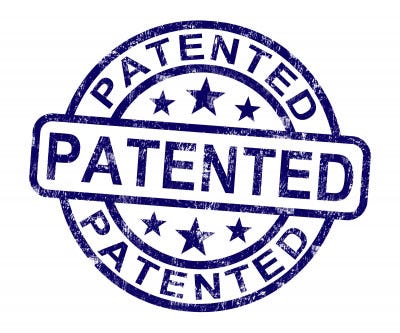What’s the Secret to Successful Medical Device IP?
A patent law expert who worked closely with one of the latest darlings of the healthcare IPO world talks about the must-haves for a successful medtech IP strategy.
July 9, 2015

A patent law expert who worked closely with one of the latest darlings of the healthcare IPO world talks about the must-haves for a successful medtech IP strategy.
Marie Thibault

Every medtech inventor is looking for the same things—to make a difference for patients, fill an unmet medical need . . . and maybe, just maybe, become a successful public company or an in-demand acquisition target.
Glaukos, a Laguna Hills, CA-based company, achieved those goals with its iStent device for patients with mild to moderate open-angle glaucoma. The company was rewarded with a big surge in stock price upon its June IPO debut and now has a market capitalization of approximately $900 million.
William Shreve, a partner at intellectual property (IP) law firm Knobbe Martens in Orange County, CA, has worked closely with Glaukos on IP for years. MD+DI spoke with Shreve to gain insight into what he believes all medtech companies need to know about IP and patents. Here, in edited excerpts from our discussion, are some of Shreve's thoughts:
MD+DI: From an IP point of view, what made Glaukos so successful?
William Shreve: It starts with great ideas. Since the very beginning, they were looking for a way which provided more successful outcomes than were achieved with conventional surgery. For many of the patients drug therapy was not enough. Glaukos has come out with ideas which really minimize . . . how the devices get implanted, there’s significantly less trauma. They’re obviously very effective in lowering intraocular pressure. Their success again, goes back to the very creative approaches that the company has developed over the years.
MD+DI: If another medical device company wanted to replicate Glaukos’ success, what advice would you have for them?
WS: My advice in what I have seen companies struggle with on the IP side is a breakdown in communications between the company’s management and the engineering staff, and then ultimately, the sales staff and the legal dept. Oftentimes, legal is not contacted unless somebody has clearly identified that there’s an invention that needs to be patented, or there’s a particular problem. What I have found over time is that the constant dialogue between all the entities within a corporation is really important. Oftentimes what will happen is that the germ for the idea comes from the sales guy, because the sales force is out and in the street talking with the practitioners who oftentimes complain about particular issues or particular needs. They bring back those problems and once engineering . . . recognizes those problems, they come up with solutions. Those solutions are patentable.
Sometimes the simplest of inventions is something that somebody doesn’t think is very worthy of patent protection, but it actually becomes the most valuable asset. That’s where the constant dialogue between the engineers, the research and development department, and the attorneys becomes important.
MD+DI: Really, sometimes the most valuable inventions are overlooked?
WS: It’s not that unusual for inventors, because they’re highly intelligent . . . as it turns out, it is a very critical aspect of what makes a product commercially viable. It goes back to understanding—what is important here? What’s important is to try to get protection for designs and alternate designs that are commercially viable that all stem from this original idea. A lot of inventors will just dismiss those inventions that they don’t think are all that important, but they truly are, and truly have value because they’re required to make a commercially viable product.
MD+DI: Where should early-stage medtech companies start, with regards to IP?
WS: Like any startup company, the idea or the advice that is given by the patent lawyers is—let’s figure out how to define the invention in a way which fully captures the idea. Most of the time when you thinking about a good patent lawyer, you’re thinking about somebody that can take just the base, core idea and explore with the inventors how to capture the full scope of that.
For example, if you were to come up with the idea of a screw . . . Well, a screw is actually a device which is used to join two articles together. The broader definition that we can give this from a legal standpoint is a "mechanical fastener." Ok, great. You’ve done a pretty good job of defining the invention in broader terms.
But the other side of the equation that companies should be thinking about is trying to figure out what additional ways somebody could provide a commercially viable alternative to that. So, in the example I just gave you, let’s say that through further discussions, you come up with the idea of an adhesive. Well, "mechanical fastener" language is not going to be broad enough to cover an adhesive. So part of the role the patent lawyer has, at least initially, is helping this company fully realize the full scope of their invention. And then defining it in legal terms that will allow them to capture that full scope and be able to use that to protect their market share. . .
MD+DI: How can medtech inventors avoid bumping up against inventions that have already been patented?
WS: In terms of running into other people’s inventions, what winds up happening is if we do start with broad terms and there are other people’s inventions out there, then we’re going to be forced to narrow the scope of the protection in order to obtain the allowance. The patent office is looking at the invention from the standpoint of whether or not the invention is novel or new. The other thing they’re looking at is to determine whether or not the invention is not obvious in view of what other people have done. So from that standpoint, we may through the scope of the work with the patent office . . . negotiate the legal definition of the invention with the patent examiner, and figure out a way to define the invention which avoids or distinguishes it from what has come before.
But again, keeping in mind not only what the company is trying to achieve, but—have they identified commercially viable alternatives? We're trying to erect barriers through the patent that would prevent somebody from using those commercially viable alternative designs.
MD+DI: What advice do you have for smaller medtech companies who are entering a popular area of medical device therapy and are concerned about IP lawsuits from large players?
WS: What you’re describing is a very new phenomenon. It used to be that medical device companies, especially the startups, would get developed to a particular stage and once they got to the stage of havingout the concept and we’re starting to look at clinical, at that point they would be acquired. That has not happened for the last several years—actually probably going back to the early 2000s—that has pretty much dried up and most of the acquisitions that I’ve been involved with are companies that are immediately accretive. Meaning that you’re selling a product, meaning that you�’re now subject to the liability aspect.
So, we are seeing more lawsuits in the medical device area with smaller clients that are starting to commercialize their product. There’s only a few things that you can really do. Obviously, one thing that is going to be insisted upon at some stage of investment is a Freedom to Operate analysis, taking a look at what patents are out there.
Another possibility is making certain that you are in a position to negotiate from strength. If you believe that you have some vulnerability in connection with another company’s patent, it may make sense to be looking for patents that you can acquire that are relevant to their products. So that if you are hit with a lawsuit, you have the ability to countersue them on their products, making them recognize that. In that situation, it often is the case that the larger company is going to have more exposure because they’re selling more product.
MD+DI: Are there any IP differences to consider for companies pursuing an IPO versus getting acquired?
WS: I don’t really think there are any real differences. Obviously, the road that you have to walk down to get to an IPO is different than an acquisition, but in both cases you’re going through some pretty intensive diligence. The advice to a company at either stage would be to make sure that you have all your ducks in a row.
Typical diligence will involve confirmation of ownership, the determination of validity and scope of your own patent portfolio, determining whether or not there’s any exposure to third party patents. Being able to identify . . . any of those issues and have answers to the likely questions that will come up if you do have those issues is really important. That work is best done before you start the process.
MD+DI: Anything else medical device companies should keep in mind?
WS: Medical device companies shouldn’t put on blinders. They should know what they’re doing to get protection specifically for what they’re doing. They have to understand what the direction of the overall marketplace is, and not only further develop based on that knowledge, but also further position their patent portfolio with that knowledge in mind.
Enhance your medtech knowledge by attending MEDevice San Diego, September 1–2, 2015, in San Diego. |
Marie Thibault is the associate editor at MD+DI. Reach her at [email protected] and on Twitter @medtechmarie.
[Image courtesy of STUART MILES/FREEDIGITALPHOTOS.NET]
About the Author(s)
You May Also Like
.png?width=300&auto=webp&quality=80&disable=upscale)

